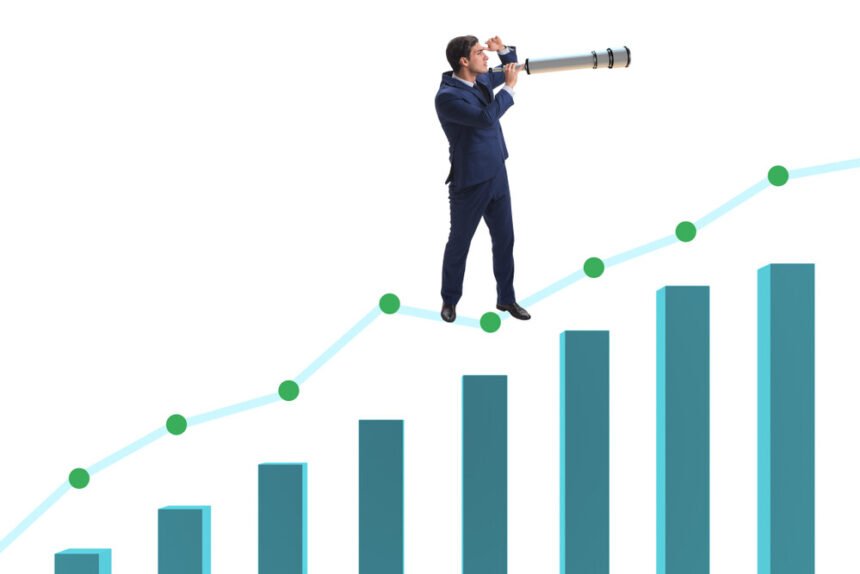Depreciation occurs when the value of business assets goes down, often due to wear and tear, but for other reasons, too. Some people quickly assume that because depreciation is an inevitable part of owning things used for a company, there’s no use in trying to minimize it – especially when predictive analytics help with depreciation.
While it’s not entirely preventable, there are ways to decrease the speed at which it happens and take preventive actions that increase an item’s usability and lifespan. Many companies depend on predictive analytics to do this. Here are five innovative ways such data could help.
1. To Monitor Natural Resource Reserves
Although people often think of business depreciation concerning computers and machinery, natural resource usage causes a type of depreciation called depletion in that context.
Rockwell Automation is a company using Internet of Things (IoT) sensors to capture analytics that help humans predict future performance in the oil industry and determine whether it’s time to make changes to parts of a company’s operations.
One oil company also installed sensors on gas pumps that consumers visit to fuel their cars. These components give detailed information about how often people get fuel and how much they use.
If a company dealing in the oil and gas sector or any other industry highly dependent on natural resources realizes too late that resources are too scarce in a given area, the business could fold. These sensors spot patterns during all phases of the oil-gathering process, helping establishments proactively make adjustments.
2. To Facilitate Smarter Hiring and Retention Decisions
Accountants don’t classify employees as depreciable assets, but workers are undoubtedly crucial for keeping companies afloat. As such, some analysts advocate for using predictive analytics to identify a metric called employee lifetime value.
Not surprisingly based on the name, employee lifetime value is the net profit associated with a worker during the time they assume a given role.
Because different roles may be more or less valuable to employees based on their skillsets and to companies depending on needs, a worker’s lifetime value changes with each role they assume.
Human resources managers use predictive analytics to gauge how well an applicant fits into an organization’s culture and often depend on multiple data streams during the candidate selection process to do it.
After all, an employee’s lifetime value is low if a company spends substantial amounts of time and money to train them, but the person only remains an employee for six weeks due to discontentment with something about the company.
Moreover, various factors predict employee turnover. Research compiled by Glassdoor shows that for every 10 months an employee stays in the same role, they are one percent more likely to leave the company when they transition into a new job.
Some work can also increase job-related injuries and illnesses, while analytics help employers make positive changes. For example, predictive analytics could show that assembly line workers at a particular company are highly likely to leave after getting repetitive motion injuries.
If so, the organization might change its scheduling, workstations or another factor to reduce the workers’ chances of getting hurt, thereby boosting their lifetime value.
3. To Guide Purchasing Choices
Predictive analytics interfaces can also show data indicating how goods or equipment should perform over time and how to keep it functioning correctly.
Predictive analytics can help calculate the average lifespan or depreciation for a piece of equipment that receives correct, ongoing maintenance. Then, buyers have the information needed to conclude whether to invest in it.
However, predictive analytics isn’t only useful when buying items.
Real estate professionals also use them to calculate property investments and associated depreciation. They can also look at factors like buying behaviors and market trends to shape their business practices.
Data informs companies that buy vehicle fleets, too. They can minimize depreciation by researching which models retain value the longest. For example, research shows compact crossovers depreciate less than mid-sized sedans. Analysts believe that’s because those cars provide high levels of utility and fuel economy compared to the other models.
4. To Keep Equipment in the Ideal Environments
Maintaining equipment involves more than scheduling regular servicing appointments. It also means keeping the items in the right environmental conditions for optimal functionality.
For example, tech companies know how important it is that server rooms stay in a desirable temperature range. If they get too hot, components can fail, directly causing depreciation of equipment.
Predictive analytics can give warnings that environmental conditions are harming delicate equipment, letting owners take action before it’s too late.
Certain prolonged poor conditions could shorten the lifespan of a company’s equipment, contributing to depreciation and hassles causing costly shutdowns of critical company operations.
5. To Reduce Obsolescence
Company assets also depreciate when they’re obsolete due to inefficient practices or parts. Predictive analytics can track the productivity of an asset over time. Thanks to that data, company managers can notice if it seems something’s about to become obsolete.
When they have the insights needed to take action, it’s easier to update an asset so that it doesn’t become obsolete. Alternatively, a business may alter its operations to make the reduction in productivity less hindering.
Unused inventory can also depreciate if it remains in stock for too long. That could happen if a once in-demand product falls out of favor with the target market because something better came along and captured attention.
Predictive analytics platforms could highlight when a product made by a company isn’t selling as strongly as it once did. If organizations use that information to adapt their methods, they might end up with less obsolete inventory and figure out how to fit their business operations to current consumer data.
Reducing Depreciation Requires Thinking Ahead
Business leaders must utilize long-term thinking when planning how to minimize the depreciation of their assets.
However, technologies based on predictive analytics can also provide significantly valuable information that’s impossible or extraordinarily time-consuming to achieve with human abilities alone.

